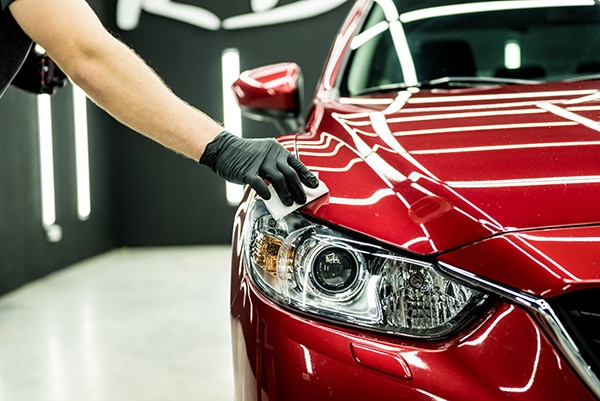Travel
Dubai Car Tinting: Benefits, How-Tos, and The Law UAE

If you’re a car owner, you might have considered tinting your car windows at some point. Car window tinting has become increasingly popular due to its numerous benefits, but it’s essential to know the proper way to do it and the legal regulations that come with it. In this article, we’ll delve into the world of car tinting, exploring its advantages, providing step-by-step instructions, and shedding light on the legal aspects.
The Benefits of Car Tinting
Increased Privacy
Tinted windows provide an increased level of privacy, keeping prying eyes from peering into your vehicle. Whether it’s personal belongings or passengers, the added privacy is a significant advantage.
UV Ray Protection
Car window tints can block a substantial amount of harmful UV rays from entering the vehicle. This not only protects your skin from potential damage but also prevents the interior from fading and cracking due to prolonged sun exposure.
Heat Reduction
Tinted windows can significantly reduce the amount of heat that enters your car. This is especially beneficial during hot summer months, as it helps maintain a comfortable interior temperature and reduces the need for excessive air conditioning.
Enhanced Aesthetics
Apart from the practical benefits, tinted windows can enhance the overall aesthetics of your car. The sleek and polished look offered by tints can elevate the appearance of any vehicle.
How to Tint Your Car Windows
Tinting your car windows might seem daunting, but with the right approach, it can be a satisfying DIY project. Here’s a step-by-step guide to help you through the process:
Gather the Necessary Tools
Before you begin, ensure you have all the required tools, including the tint film, a utility knife, a squeegee, a heat gun, and cleaning materials.
Preparing the Windows
Thoroughly clean the windows from both the inside and outside. Any dirt or debris left on the glass can affect the tinting process.
Applying the Tint
Measure and cut the tint film according to the dimensions of your windows. Carefully apply the film, starting from the top and working your way down. Use the squeegee to remove air bubbles and ensure a smooth surface.
Dealing with Bubbles
Bubbles might appear during the application process. If you notice any, use the squeegee and heat gun to eliminate them. Be patient and persistent for the best results.
Finalizing the Process
Trim any excess film and give it a final cleaning. Allow the tint to cure for a few days before rolling down the windows.
Understanding Car Tinting Laws
Before tinting your car windows, it’s crucial to understand the legal limitations in your area. The laws can vary based on Visible Light Transmission (VLT) limits, specific window regulations, and potential medical exemptions.
Visible Light Transmission (VLT) Limits
VLT refers to the amount of visible light that can pass through the window. Different regions have varying VLT limits for front, rear, and side windows. Make sure to adhere to these limits to avoid legal issues.
Specific Tinting Regulations
Some areas might have specific rules about which windows can be tinted and to what extent. Research the regulations in your jurisdiction to ensure you’re in compliance.
Medical Exemptions
In certain cases, individuals with medical conditions that require limited sun exposure might be eligible for tinted windows beyond the legal limits. Check with your local authorities for information on obtaining a medical exemption.
DIY vs. Professional Tinting
Deciding between DIY and professional tinting depends on your skill level and preferences.
Pros and Cons of DIY Tinting
DIY tinting is cost-effective and can be a rewarding experience. However, it requires meticulous attention to detail, and the results might not match professional standards.
Benefits of Professional Tinting
Professional tinting ensures high-quality results. Experienced technicians have the expertise and tools to achieve seamless tint application while adhering to legal regulations.
Caring for Tinted Windows
Maintaining tinted windows is relatively simple.
Cleaning Techniques
Clean your tinted windows with a mild, non-ammonia-based cleaner and a soft cloth. Avoid abrasive materials that could scratch the tint.
Avoiding Damaging Materials
Be cautious when placing objects on the window sill. Sharp or abrasive items could scratch the tint or damage its edges.
Common Tinting Misconceptions
Tinting Worsens Night Visibility
When properly applied within legal limits, tinting does not significantly impact night visibility. High-quality tints maintain adequate visibility both day and night.
Tinting Is Only for Aesthetics
While tints do enhance a vehicle’s appearance, they also provide practical benefits such as UV protection, heat reduction, and increased privacy.
Conclusion
Car tinting offers a multitude of advantages, from privacy and UV protection to heat reduction and aesthetic enhancement. By following proper guidelines and understanding the legal aspects, you can enjoy all the benefits tinted windows have to offer.
FAQs
Is car tinting legal everywhere?
- Car tinting laws vary by region. It’s important to research and adhere to your local regulations.
Can I apply tint over my existing tint?
In most cases, it’s not recommended to apply new tint over existing tint, as it can lead to bubbling and reduced visibility.
Will tinting my windows completely block UV rays?
While tinting significantly reduces UV ray penetration, it might not completely block them. High-quality tints offer better protection.
Can I roll down my windows immediately after tinting?
It’s best to wait a few days for the tint to fully cure before rolling down your windows. Yes, there are tints available with various VLT percentages, allowing you to choose a level of darkness that suits your preferences while adhering to the law.


